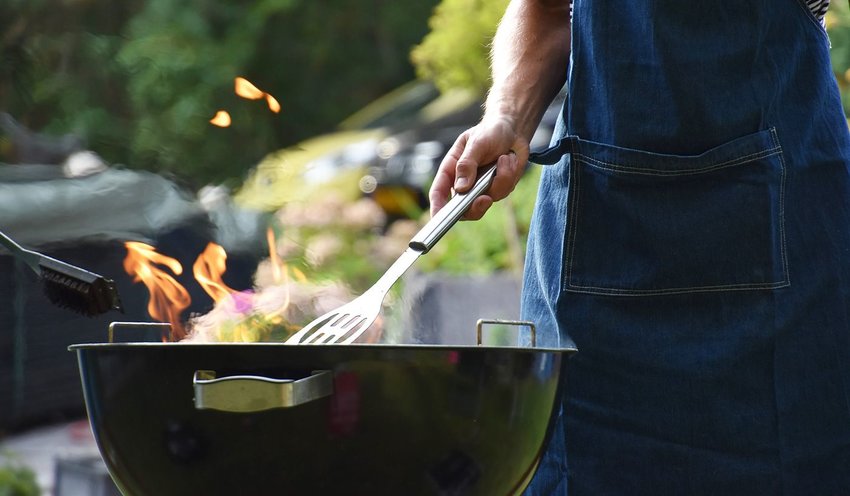We all know barbecue is tasty, but the word itself is a hotly contested term — one that any Southerner is happy to clarify. Is it a noun? Or a verb? Is it something you eat, or something you do? If it's a food, what kind of food is it? And then there's the debate over sauces. Depending on your location, it could be any variety of ingredients. Before you give up your barbecue tongs in frustration, we're here to clarify what exactly "barbecue" means.
Origins of Barbecue Terms
Barbecue
As a noun, "barbecue" commonly refers to both the actual food and the style of preparation: meat that has been smoked for a long time at a low temperature with heat that radiates from hardwood. Traditionally, pork is the meat of choice, but other types are acceptable too, depending on your region. "Barbecue" can also refer to the event where the smoked meat is served, but be wary. Though the term has evolved over time to refer to a specific cooking method, it never refers to the act of cooking just any meat over open flame. Don’t invite a Southerner to a barbecue and serve them a hamburger — in that case, just invite them over to grill out.
Smoking
"To smoke" is a verb that describes how the meat is cooked. Smoke cooks, flavors, and preserves the meat by exposing it indirectly to smoke and heat that comes from wood. The indirect application of the heat is important — with direct flame, the exterior of the meat would quickly char and burn, while the inside would remain raw. The ideal temperature for smoking pork is 126 to 176 degrees Fahrenheit, and depending on the cut and size of meat, it is often tended to for more than 12 hours. Creating barbecue is a lengthy process with varied approaches that differ from pitmaster to pitmaster (the nickname for the person watching over the smoker).
Bark
Those unfamiliar with the "bark" of barbecue may think that someone went terribly wrong in the cooking process. Like on a tree, barbecue’s bark is an exterior covering that protects the much softer interior. Bark is a good thing for barbecue, as it is for trees, though this version is much tastier. Bark is what happens when the meat is exposed to heat and oxygen. Thanks to seasonings (rubs) that many pitmasters add, it imparts an extra layer of flavor to the meat.
Pit
The "pit" is where the barbecue is cooked. (It also serves as the domain of the pitmaster.) It can be as simple as a homemade above-ground pit where a constant source of fire is stoked to create smoke, or it can be as fancy as a several-thousand-dollar ceramic smoker with upgraded bells and whistles for cooking control. Commercial barbecue pits are often enormous walk-in style rooms that need to have fuel shoveled in, but most people who make barbecue recreationally have mid-range smokers that you can find at a hardware store.
Barbecue Sauce
Barbecue sauce differs by region, even varying wildly within the same state. These sauces are generally thin, with a variation on a vinegar, tomato, or mustard base, and peppers, molasses, and spices as add-ins. Specific regions have strong ties to their particular sauces, which can hail from original settlers to the area — such as the tradition of a mustard-based Carolina Gold barbecue sauce from German settlers in the Midlands of South Carolina in the 18th century.
Eastern North Carolina sauce is traditionally vinegar-based, and applied liberally throughout the smoking process. In the western portion of the state, you'll find a tomato-based sauce called Lexington, or Piedmont.
In Texas, they apply a glaze-like sauce, appropriately called "mop sauce," with a mop during the cooking. People in Alabama, meanwhile, love to coat chicken with a mayonnaise and vinegar condiment. And that tomato and molasses-based dark red sauce that most of the rest of the country calls "barbecue sauce" is technically Kansas City sauce.
Now that you’re knowledgeable about these common terms, it’s time to get invited to a barbecue to eat some barbecue, and maybe let the host know if they aren’t barbecuing. If the pitmaster is doing it right, they'll be smoking pork, in a pit, producing an even cook with a great bark, served with a variety of tasty barbecue sauces!
Photo credit: Vincent Keiman/ Unsplash

